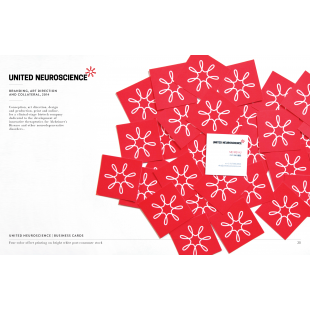Media coverage
-

TIME magazine report - How an Experimental Injection Could Revolutionize HIV Treatment
How an Experimental Injection Could Revolutionize HIV TreatmentTIME magazine report - How an Experimental Injection Could Revolutionize HIV Treatmentmore -

J.P. Morgan Roundtable: Financing Challenges, And Opportunities, For Complex Therapies
Part 1: Scrip spoke with companies working on cell and gene therapies and novel neuroscience platforms – areas difficult to finance in the past, but seeing increasing investor interest – about funding challenges and opportunities in 2019.J.P. Morgan Roundtable: Financing Challenges, And Opportunities, For Complex Therapiesmore -
Alzheimer’s vaccine shows promise in early stages
For two decades, biotech companies trying to tackle Alzheimer’s disease have had little success. While vaccines have often shown promise for certain patients, they’ve come with devastating side effects for others—brain swelling, for example—because researchers haven’t been able to reliably keep patients’ immune systems from kicking into overdriveAlzheimer’s vaccine shows promise in early stagesmore -

UB-311 Vaccine Safe, Effective in Mild Alzheimer’s Patients, Phase 2a Trial Suggests
United Neuroscience’s Alzheimer’s vaccine candidate UB-311 was found safe and well-tolerated, triggering an antibody response against beta-amyloid in most of the patients, according to Phase 2a trial results.UB-311 Vaccine Safe, Effective in Mild Alzheimer’s Patients, Phase 2a Trial Suggestsmore -
Dr. Siegel: Alzheimer’s disease — Why results from a vaccine and a test offer concrete reasons for hope
Today there are new reasons to be hopeful about the fight against Alzheimer’s disease. There is a new Alzheimer’s vaccine known as UB 311, produced by a small company, United Neuroscience, in Dublin, Ireland, that has just delivered promising results in phase two clinical trials in humans.Dr. Siegel: Alzheimer’s disease — Why results from a vaccine and a test offer concrete reasons for hopemore -

United Neuroscience To Move Forward Alzheimer’s Vaccine After Promising Phase IIa
Private, Dublin-based biotech United Neuroscience says it plans to rapidly advance its active Alzheimer's vaccine immunotherapy UB-311 after reporting positive top-line results from a Phase IIa study of 42 patients on Jan. 16.United Neuroscience To Move Forward Alzheimer’s Vaccine After Promising Phase IIamore




